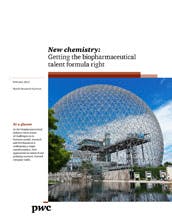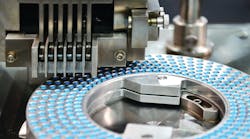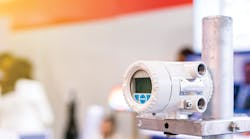New R&D organizational models based on partnerships, alliances, and even crowd sourcing are changing talent needs, challenging traditional talent management strategies and redefining the role of human resources (HR) in R&D productivity.
HRI’s report, New Chemistry: Getting the biopharmaceutical talent formula right, takes an in-depth look at the changing R&D model and what it means to workforce design. Pharmaceutical companies have long relied on a highly educated workforce of scientists and researchers to replenish their product pipelines. In response to a host of challenges to its business model, the industry has right sized its workforce and is changing how it conducts R&D. Demand for productivity is as high as ever, from a workforce with fewer resources and new expectations of performance based on improved health outcomes and/or lower costs.
HRI suggests that new R&D models need equally innovative HR strategies to find the right mix of scientific talent, skills and incentives. The knowledge-intensive pharmaceutical industry had the highest reported difficulty in hiring top talent of the 19 industries featured in PwC's 2012 Global CEO Survey. CEOs identified talent gaps as one of the biggest threats to future growth prospects.
Research conducted by HRI, including a survey of human resource and R&D executives at U.S. biopharmaceutical companies found:
• Fifty-one percent of industry executives report that hiring has become increasingly difficult and only 28 percent feel very confident they will have access to top talent.
• Nearly three-quarters (72 percent) of executives said their organizations are looking to increase R&D capacity over the next 12 months, and six in 10 intend to increase investments over the next three years to create a more skilled workforce.
“The scientific community produces the golden eggs of medical scientific discovery, and as biopharmaceutical companies aggressively overhaul their R&D engines, they also must create an environment where the source of innovation can thrive,” said Michael Mentesana, U.S. pharmaceuticals and life sciences R&D Advisory services leader, PwC. “Scientists are driven by the chance to tackle tough problems, but not when they are operating in a pressure cooker environment with incentives that aren’t well aligned with company goals or their own sense of satisfaction. Real R&D transformation will not be complete until the R&D culture itself is rebooted and unless HR, R&D and senior management work together from the beginning.”
New Era of Collaborative Research and Development
HRI research found that one in three U.S. biopharmaceutical companies has revamped its approach to research and development (R&D), looking to boost productivity by reconfiguring R&D operations and organizational structure, increasing their focus on biologics and/or seeking partnerships and alliances outside their organizations.
The two most common outside partnerships biopharmaceutical companies have been pursuing are with academic medical centers and third parties, such as contract research organizations, according to HRI. Some companies also are teaming up with traditional competitors through consortiums, alliances with foundations, crowd sourcing, and other relationships that enable them to build R&D capacity and share risks and rewards with external partners.
As companies pursue more external collaborations, their R&D talent needs are changing. HRI’s survey of biopharmaceutical executives found:
• The most needed skill in R&D over the next three years will be the ability to develop and manage outside partnerships.
• Following at a close second is the need for skills in regulatory science to help with new rules and regulations.
• Bioinformatics and health economics outcomes research also will be in greater demand because companies must be able to prove, with real world data, that their products improve health or reduce overall healthcare costs.
These skills have not been part of typical scientific training, but a new breed of cross-trained scientists is emerging, says HRI. Star scientists in the new R&D culture are likely to be those who have dual degrees in science and business or experience in management, quality or clinical operations. To recruit this type of talent, human resources leaders may need to cast a wider net to draw from other industries and alliances.
New Role for Human Resources in R&D
While many biopharmaceutical companies are looking outside for talent in new partnerships, HRI found others are restructuring their own scientific workforces and incentive structures. Either way, HR is playing a bigger role in strategic planning, organizational design, compensation, incentives, and professional development of the scientific workforce. Internal barriers have limited HR’s role in the past to hiring and firing tasks, but HR’s ability to have a big influence on R&D productivity may depend on how tightly it is integrated with R&D organizational decision-making going forward.
HRI’s research found:
• Only about half (52 percent) of HR executives surveyed said leadership within their own organization views HR as a strategic function. The remainder (48 percent) said leaders still see it as tactical.
• Seven in 10 (70 percent) report that the top leadership of their organizations have become extremely involved in workforce planning.
• Few organizations have adopted innovative incentive programs to encourage R&D productivity, such as intellectual property sharing or sales royalties. The majority (80 percent) are still relying on traditional bonuses.
To download the full HRI report, visit: www.pwc.com/us/newchemistry.



